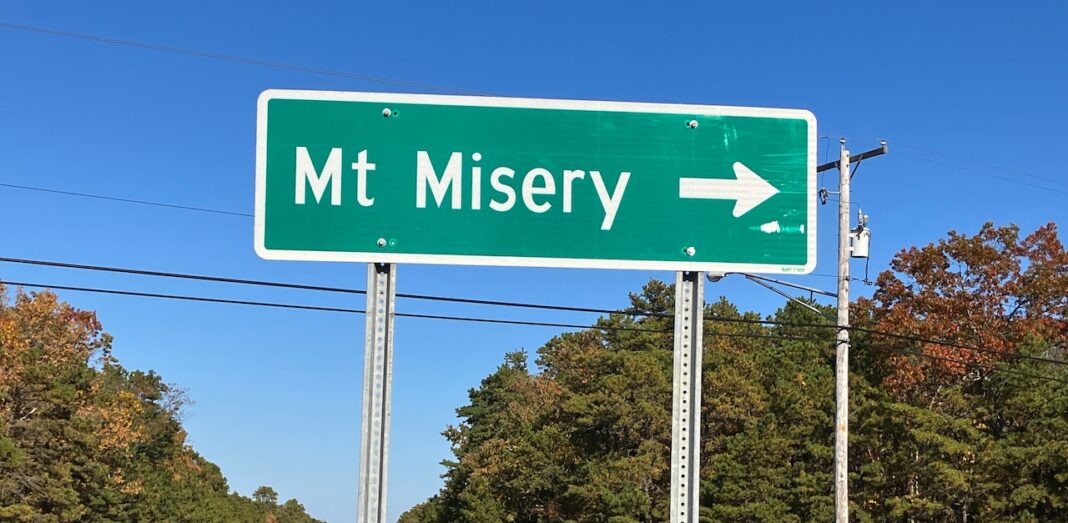Exploring New Jersey’s Forgotten Towns: A Journey Through History
A Step Back in Time
When we think of New Jersey, names like Newark, Princeton, and Atlantic City often come to mind. But what about the towns that have faded away, leaving behind echoes of their colorful pasts? Places like Paradise, Mount Misery, Jumbo, and Caviar might not be mentioned in your typical travel guide, yet they tell a story that enriches the fabric of this state’s history.
Caviar: The Unexpected Caviar Capital
Nestled on the Delaware bayshore, Caviar was once the world’s leading supplier of this luxurious delicacy. In the late 1800s, sturgeon roe was treated as nothing more than bait. However, with the entrepreneurial spirit of German immigrant Benedict Blohm, the perspective shifted. He began catching sturgeon on the Delaware River, and soon a buzzing town emerged. With about 400 fishermen inhabiting cabins and houseboats, Caviar boasted a hotel, restaurant, and a post office. Unfortunately, by the 1920s, declining sturgeon populations led to the town’s decline, leaving little trace except for a name that has since faded into obscurity.
Snufftown: A Small Village With a Big Name
An intriguing history surrounds the village of Snufftown. The town’s name raises questions—was it named for the love of snuff tobacco, or was the name a euphemism for liquor? Local lore indicates that the village never had a snuff mill. It transitioned from Snuffletown to Snufftown, and ultimately became Stockholm. Local historian Henry Charlton Beck chronicled its transition, capturing the essence of life in a place where a quiet community thrived amidst the piney woods.
Timbuctoo: A Beacon of Freedom
Founded in 1826 by four African-American men, Timbuctoo represented hope and freedom, not just for its residents but also as a stop for many on the Underground Railroad. At its peak, the village had a school, a church, and just over 100 residents. Today, while few structures remain, the spirit of this historically significant town persists, especially with the Zion Wesleyan Methodist Episcopal Church still standing, its cemetery serving as a testament to those who fought for freedom during the Civil War.
Mount Misery: From Hardship to Hidden Gem
Contrary to what the name implies, Mount Misery in Burlington County doesn’t boast towering peaks or dramatic views. Instead, it features a tranquil landscape adorned with pine forests and lakes. The name is believed to stem from the miserable conditions faced by workers in the local sawmill during the 1800s. The Mount Misery Hotel once provided refuge for weary travelers, while the surrounding woods offer tranquility today. Hiking trails link this serene landscape to broader state forests, creating a space for exploration and relaxation.
Othello: A Quiet Oasis with Historical Depth
Othello, named after the titular character from Shakespeare’s play, harbors a rich historical narrative. This community was another critical stop on the Underground Railroad. The Bethel Othello African Methodist Episcopal Church, established in the 1830s, is a notable landmark that underscores the area’s rich heritage of resistance and hope for freedom-seeking individuals.
Success: The Irony of Its Name
Even the title of Success holds a sense of irony. This small community barely managed to achieve stability and eventually succumbed to decline after the local timber resources were exhausted. Nearby, the exploration of the region’s resources was marked by failure, as nearby Prospertown similarly fell short despite efforts to drill for oil. The town of Success faded into obscurity alongside the whispers of ambition unfulfilled.
Paisley: The Dream of a Magical Resort
Just as quickly as the dream of a luxury resort community sprang up in Paisley, it vanished into thin air. In the 1880s, promoter H.A. Freeman conjured visions of “The Magic City,” selling plots in a pine-scented paradise. Despite grandiose claims that the air had healing properties, the venture ultimately collapsed, and investors lost their fortunes. Today, the ghost of Paisley lingers only in historical records.
Georgia: An Unexpected Naming Legacy
It might come as a surprise, but Georgia isn’t named after the Southern state. Instead, this quaint locale in Freehold Township is named after King George III. Though the original town has all but vanished, the Georgia Road schoolhouse remains a lasting reminder of its educational heritage.
Recklesstown: A Name of Lighthearted Irony
Recklesstown once earned its name from Joseph Reckless, who ran a sawmill there in the 1700s. The town eventually rebranded itself as Chesterfield, possibly due to the stigma associated with its original name. Today, little remains of its vibrant past, yet Recklesstown has left its mark in local lore.
Hog Wallow: A No Longer Feral Haven
Once home to wild hogs that thrived in the Pine Barrens, Hog Wallow has also slipped into obscurity. The historical references to wild hogs wallowing in the murky marshes tell tales of a bygone era. While the feral hogs have vanished, the region remains significant, with the Pine Island Cranberry Co. now operating where Hog Wallow once flourished.
Exploring these forgotten towns offers a fascinating glimpse into New Jersey’s diverse, often eccentric past. They may not be brimming with tourists today, but their stories remain woven into the very fabric of the Garden State, waiting to be rediscovered.



